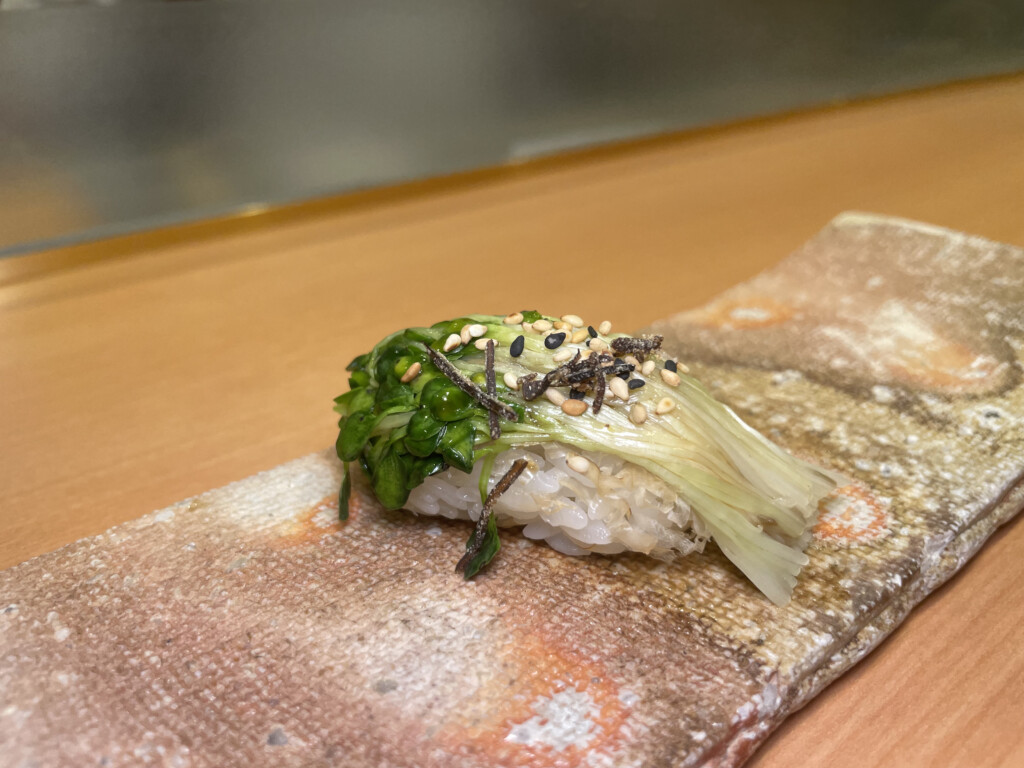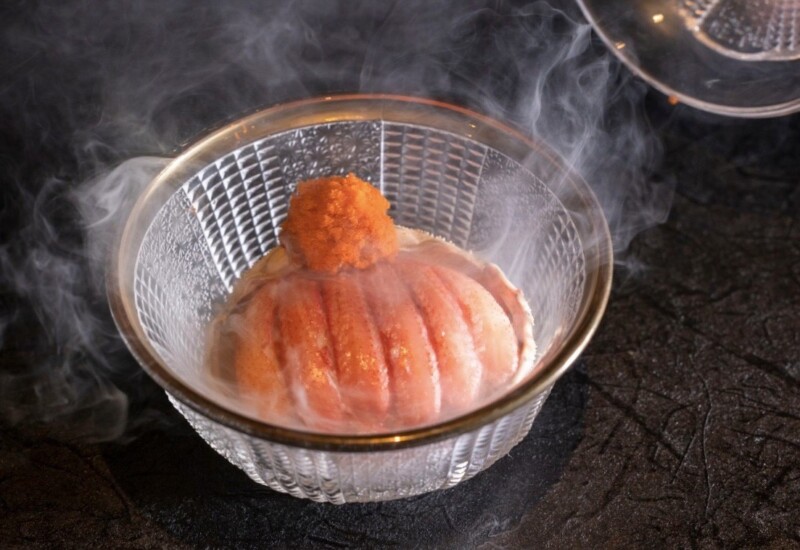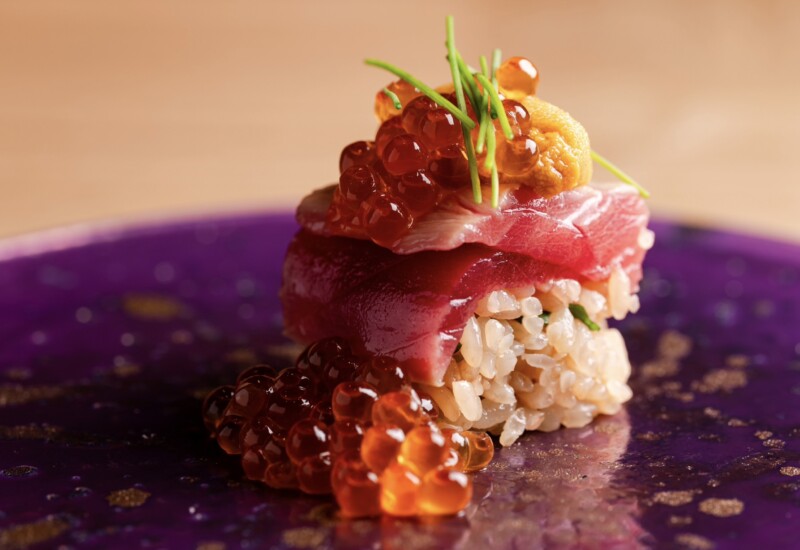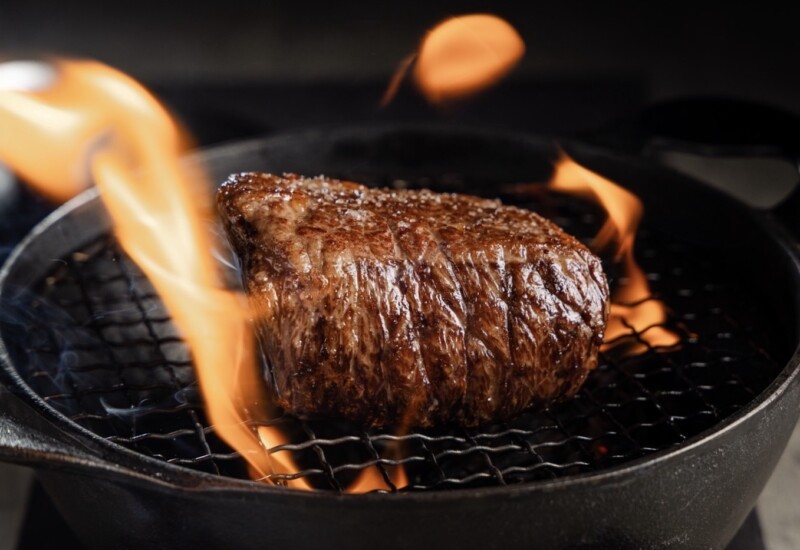鮨 おさむ / Sushi Osamu Fukuoka
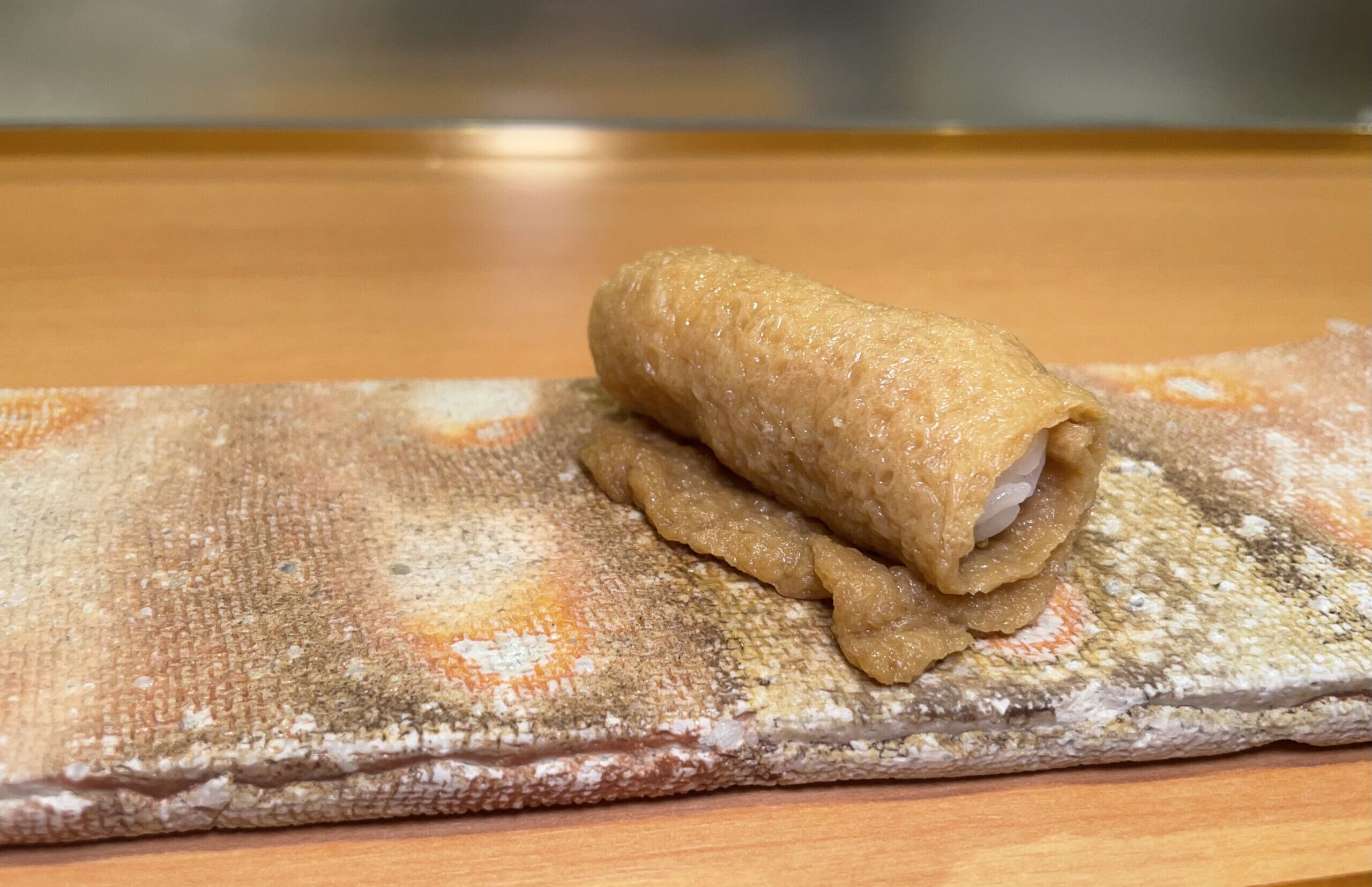
①Please introduce your restaurant.
My name is Osamu Mutou. This year marks the 34th anniversary since I opened my restaurant.
I started this place when I was 29 and have continued ever since.
I’m truly happy that so many guests now come from overseas.
I sincerely appreciate your support.
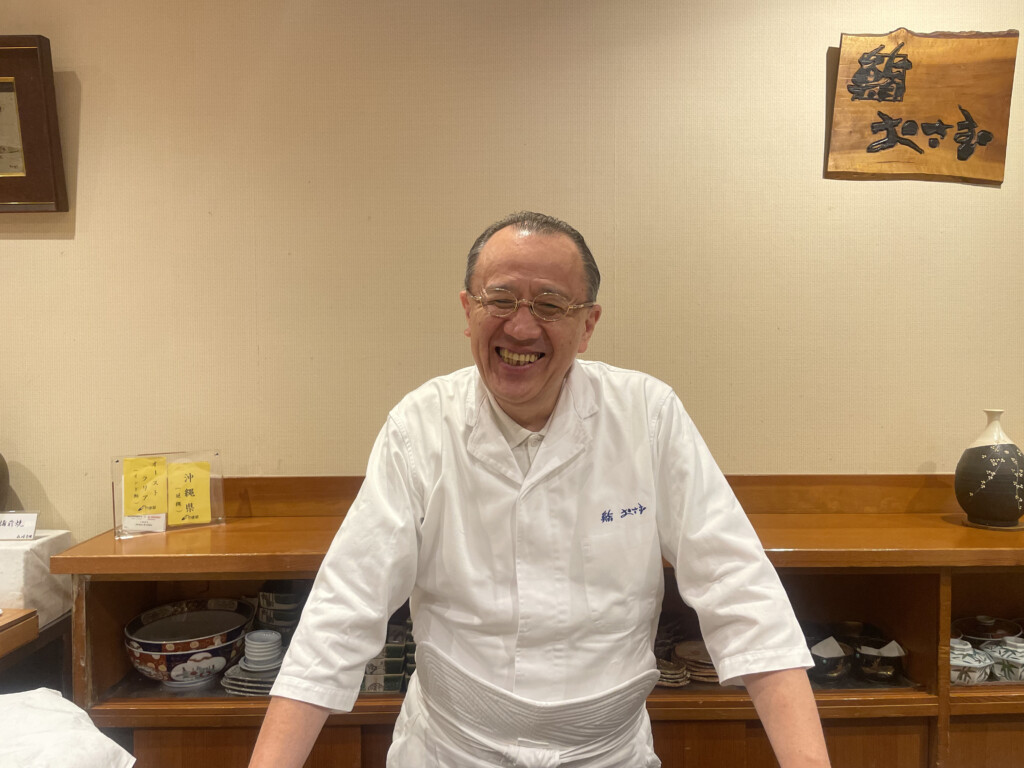
②What values or principles are most important to you as a restaurant?
The number one priority in my restaurant is to never cause food poisoning.
Every morning, I stand before the shrine and promise to do my best to ensure a safe, accident-free day.
To prevent accidents, I focus on doing my work with great care.
Another important thing is to stay observant, considerate, and thoughtful.
I always give my all to make sure each customer who visits leaves satisfied. That is my daily goal.
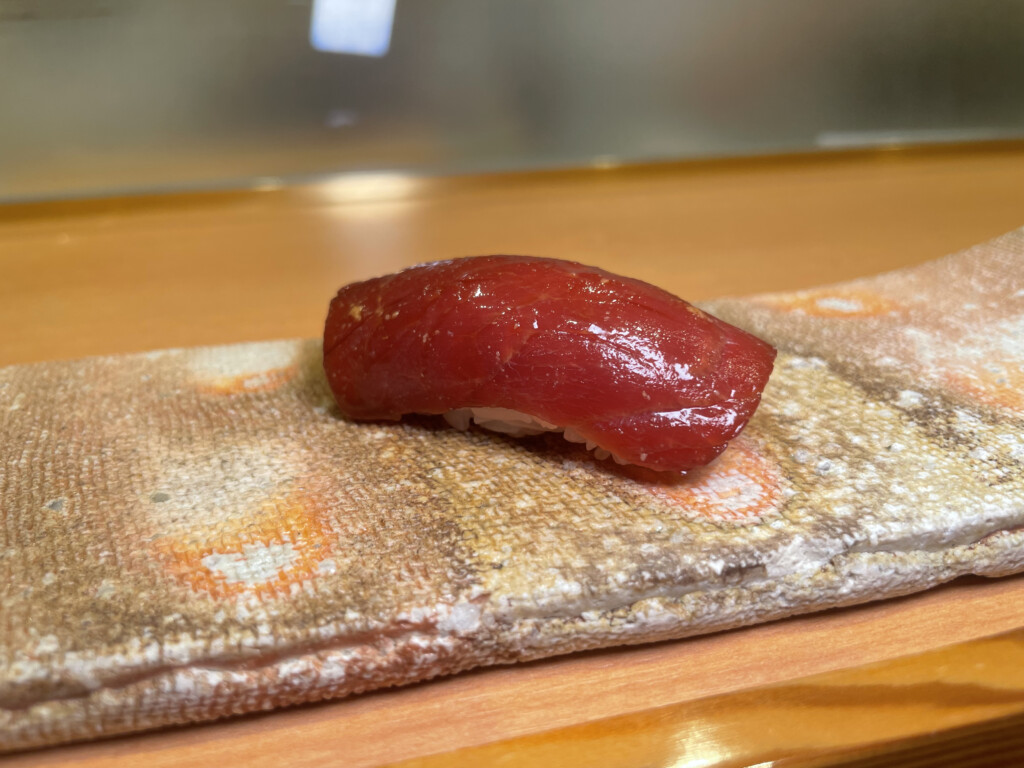
③ How do you select your ingredients, and what do you prioritize when sourcing them?
Many sushi chefs prefer to use aged rice.
New rice absorbs too much water, making it soft and hard to control.
To keep the cooking consistent, regardless of water content, chefs often blend rice types or stick to a favorite brand.
I’d been doing the same since I was 29, but about ten years ago, a customer said, “I’d love to try sushi made with new rice.” I told them, “We don’t use new rice for sushi.”
I explained that it’s too soft and not suitable. But they were very knowledgeable and said, “There’s a variety called ‘Emi no Kizuna.’”
It was developed by the University of Tsukuba specifically as sushi rice.
They suggested, “Why don’t you try using it, Chef?” I heard there was a source for the seeds in Shimane Prefecture.
I was able to get the rice from “Kokumotsusoko”. Currently, I source that rice from Niigata. I order a year’s supply in advance, and they grow and ship it just for me.
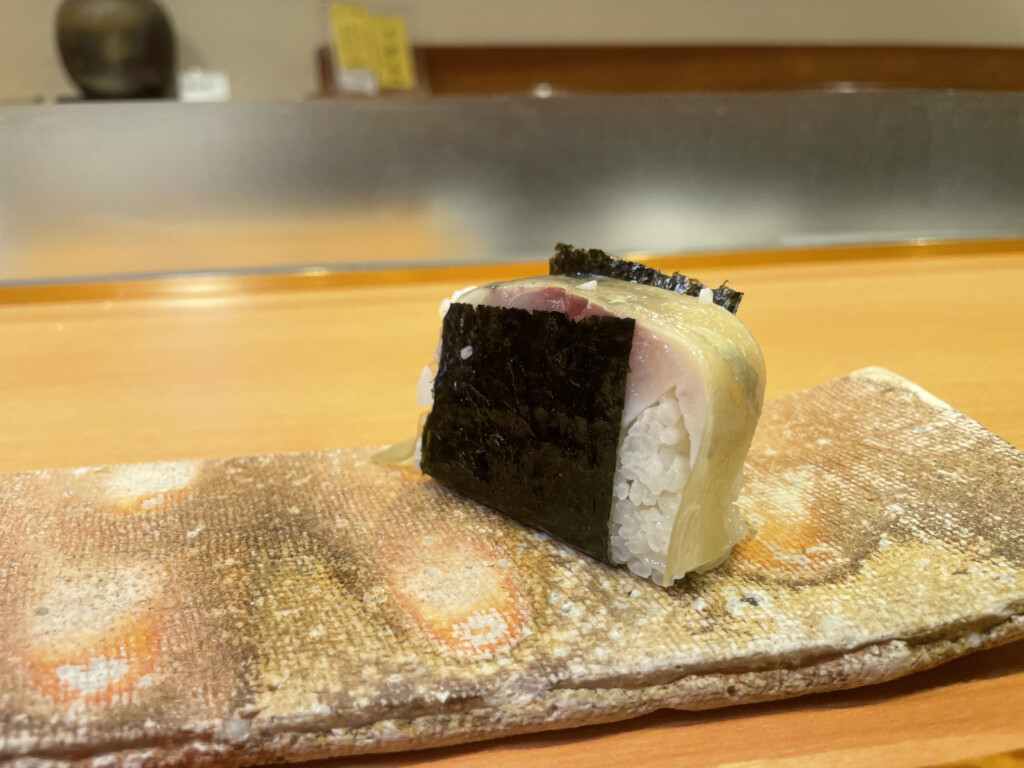
④ What makes your restaurant unique compared to others?
I truly believe fish tastes best when it’s in season.
With vegetables, many people rush the season—having bamboo shoots or other things too early.
But with fish, summer has its fish, and so does autumn.
Even in winter, fish have their own seasonal peak.
I believe it’s best to enjoy them right at their seasonal peak.
They may look similar, but some have fuller bellies or are leaner—there’s a big difference between them.
From those, I carefully select what best suits my style.
For me, that’s second nature—and the time when I must be most focused.
⑤Do you have any particular approach or philosophy when it comes to plating and presentation?
The hours I’m open to customers are short; I spend about 90% of the day preparing.
If that 90% isn’t done right, the rest of the day won’t go well.
I time things like seasoning or heating to match when guests will be eating.
I try to serve food at its absolute best by planning everything in advance.
Wasabi inari sushi was the very first original dish I created when I became independent at 29.
This special Nankan-age tofu doesn’t have any air pockets, so you can’t open it like regular ones.
The only way to use it is by rolling—it’s a bit larger than a college notebook.
It’s fried until crispy like a rice cracker, so you have to remove the oil thoroughly.
After thoroughly removing the oil, I slowly simmer it for two and a half hours.
Altogether, the process takes six hours.
I added sansho and wasabi to the Nankan-age…
Because, as a sushi chef, wasabi is always within arm’s reach.
One day, I felt the oil wasn’t removed quite well enough—it was a bit heavy.
So I added a bit of wasabi, and that’s how it all began.
I started developing it through trial and error in my late twenties.
At the time, wasabi inari wasn’t common at all.
But gradually, word spread and people started coming from Tokyo, Osaka, and other major cities.
Department stores began placing event orders of 1,000 pieces.
It got to the point where I couldn’t handle it alone anymore.
Even staying up all night, making 1,000 wasabi inari was just too much.
Rather than rely on machines, I focused on what I could do with my own hands.
My philosophy has always been to bring joy to customers in the shop.
So I shared my method openly and invited others to make delicious inari together.
Back then, there was no YouTube or social media.
So I had to rely on books or TV to spread the word.
Some celebrities and TV writers picked it up, and it became a big hit in Tokyo.
I promoted it by saying, “Let’s all make delicious inari sushi together.”
Thanks to that, you can now find similar products all over Japan.
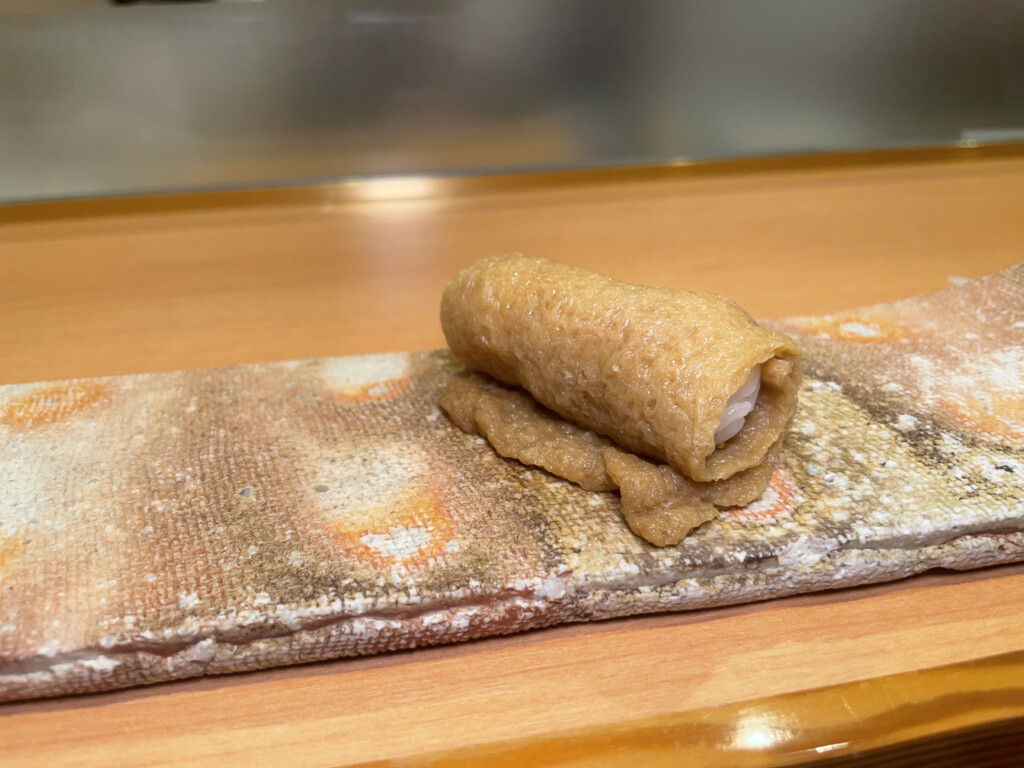
⑥ How do you curate your selection of alcoholic beverages?
For about 20 years, I had a sake called “Osamu no Sake” brewed in Fukuoka, but it ended last year.
There’s no more Osamu no Sake now, but Kyushu—especially Fukuoka and Saga—has a rich sake culture. I hope visitors to Kyushu will try its sake—I’ve selected some of my favorites for the shop.
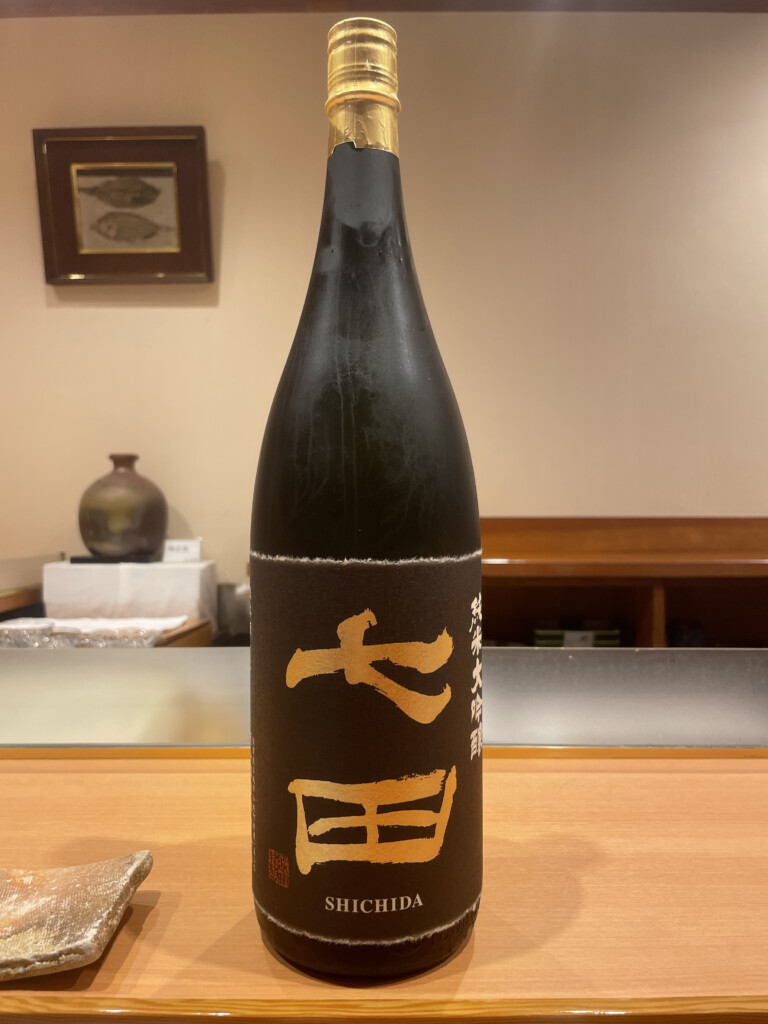
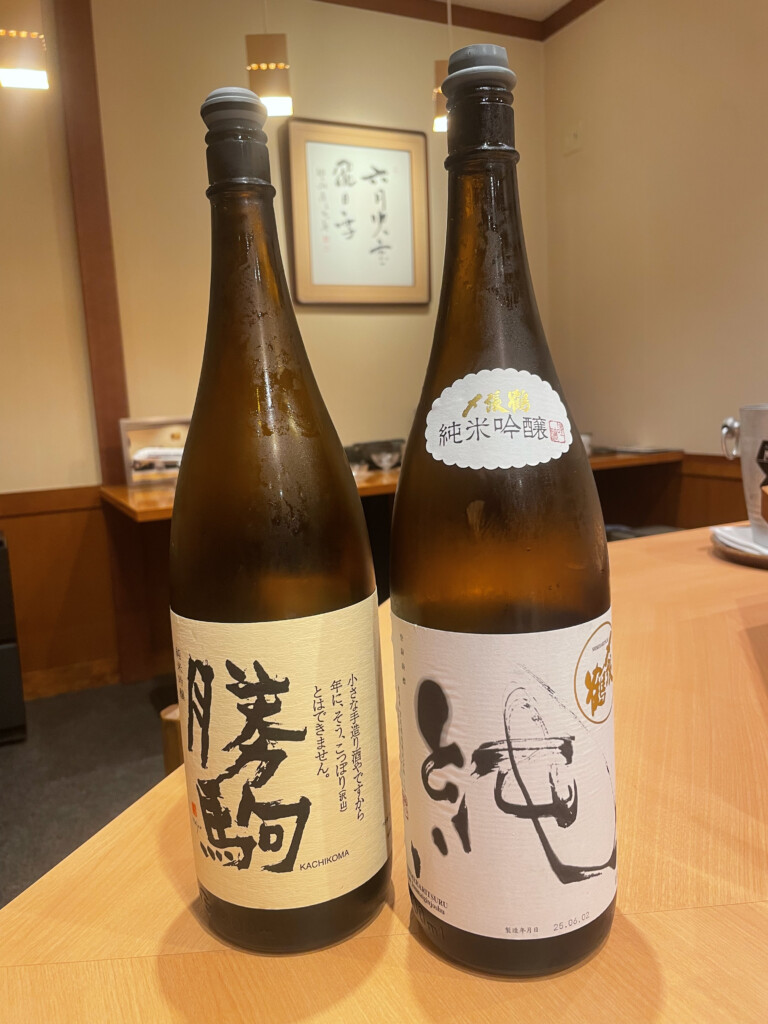
⑦ Can you tell us about your attention to interior design, tableware, and the overall dining atmosphere?
This place has been renovated three or four times to reach its current form.
The building itself is over 60 years old.
It’s aged, but we’ve kept it clean and tidy.
I use a lot of lighting to make the space feel brighter.
I try to create a cheerful, welcoming atmosphere.
In my 30s and 40s, I also ran flower arrangement and pottery classes.
I made or decorated items for use in the shop, hoping to delight my customers.
I don’t have many of my own pottery pieces left, but these dishes are my own creations.
They’re chipped, so they’re not for sale anymore.
But they’re still charming and meaningful.

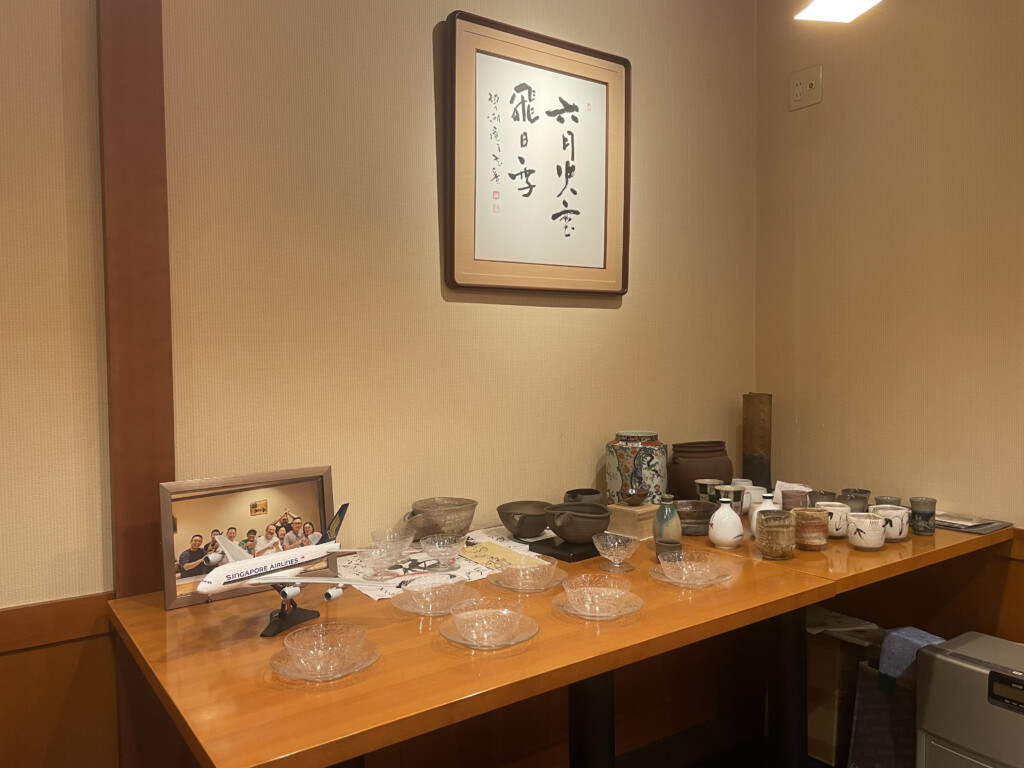
⑧ What inspired you to become a chef?
I’m originally from Saga, and when I came to university in Fukuoka, I worked part-time delivering sushi.
That’s when I first encountered sushi.
In rural Saga, we didn’t go to sushi restaurants.
Coming to Fukuoka, I was amazed.
People in Fukuoka ordered big trays of sushi for delivery and enjoyed them at home.
It was an era of dozens of deliveries a day. I became fascinated.
The head chef probably thought I looked hungry.
So he let me nibble on some sushi.
That’s how I met sushi.
I thought, “How delicious sushi is.”
I was probably just really hungry then.
But I became captivated by sushi’s charm.
From then on, I chose this path—and I’ve stayed on it to this day.
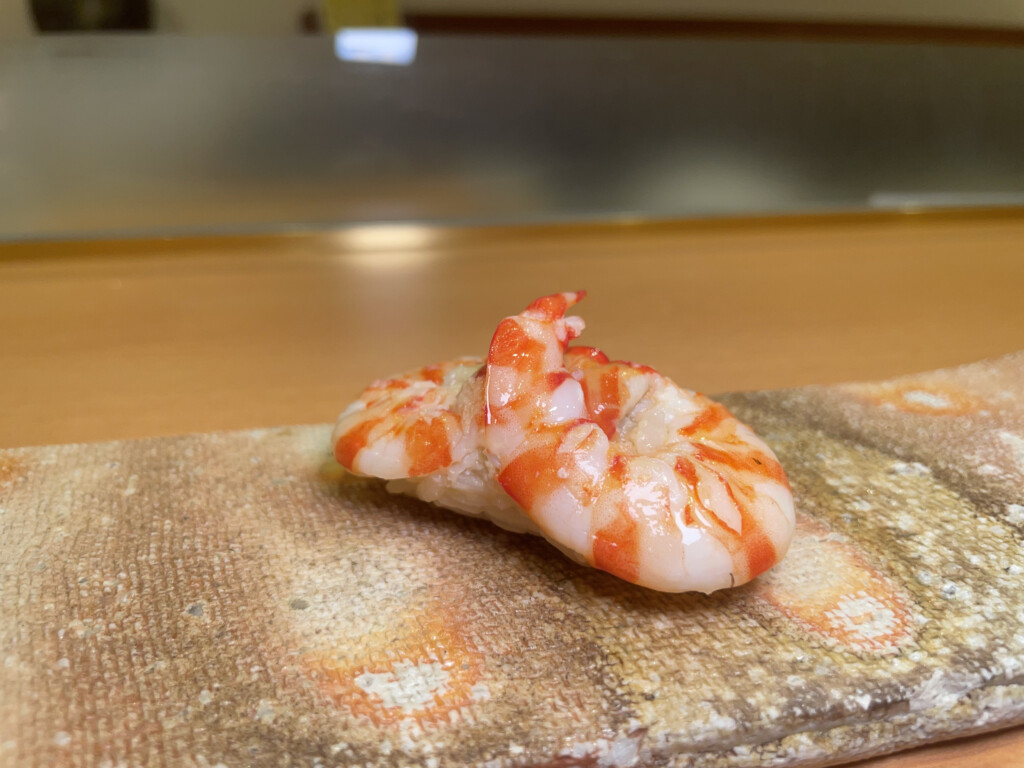
⑨ What kind of guests would you like to welcome?
Currently, we accept reservations for parties of two or more.
Solo diners can be accommodated if an odd-numbered reservation leaves a seat open.
In such cases, single guests are very welcome.
We only have six seats available per day. Usually, two or three groups enjoy those seats.
Most visitors these days come in pairs.
I want to create joy for those who love sushi and appreciate the experience of time and place.
I hope to continue working with passion for the rest of my life.
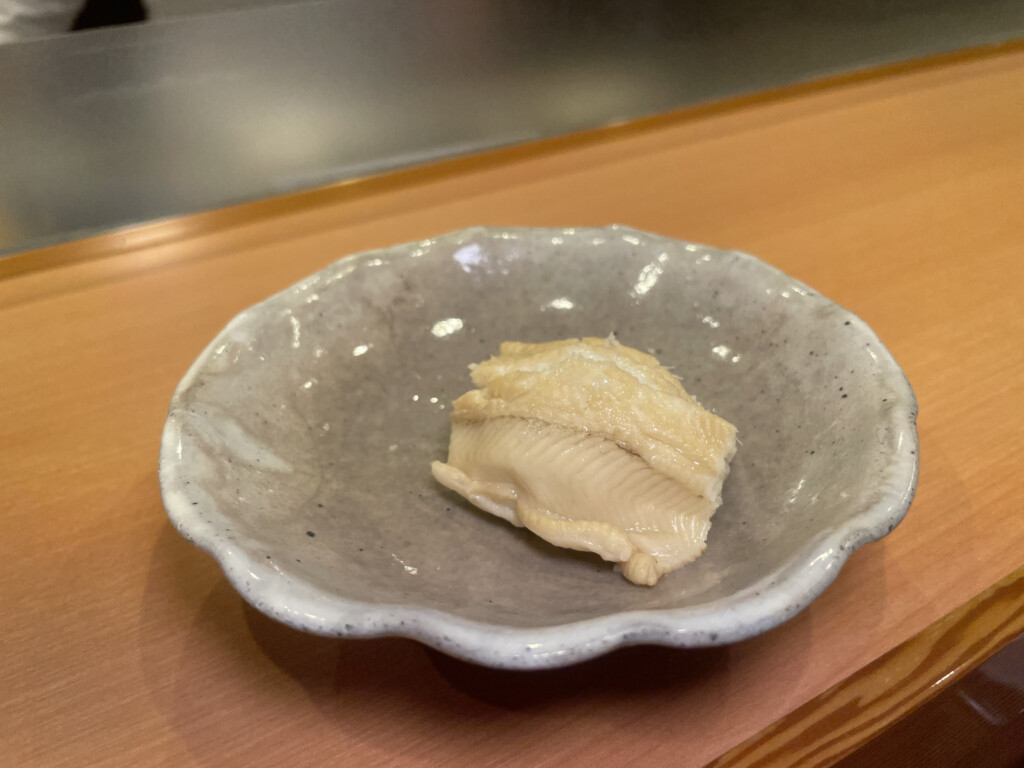
⑩ Are there any rules or things that are not allowed in your restaurant?
We don’t have a strict dress code,
but we ask that guests dress in a way that won’t bother others.
Fragrance and scent should also be considered part of etiquette.
We don’t have strict “this is forbidden” rules like “no sunglasses,” etc.
I just hope it’s a space where you can comfortably greet and chat with your neighbor.

⑪Do you have a message you'd like to share with your guests?
Thank you very much for today.
We’re located in Minami Ward, about 30 minutes from Hakata or Tenjin.
The only transportation here is by bus or taxi.
But many people who come once keep coming back for years.
That’s the kind of work I want to keep doing.
Rather than striving to be the “best sushi maker,”
or the “most delicious sushi shop,”
I want this to be the place where people say, “That was fun. Let’s go again.”
That’s the kind of sushi restaurant I aim to be. That’s all. Thank you.
